
How do dehumidifiers work? Learn everything you need to know
In a country like the UK, where damp and rainy weather is all
Breathe easier and banish damp — reduce moisture, mould and condensation with compact, quiet dehumidifiers you can control from anywhere via the TCP Smart app. Perfect for the UK’s wetter months.
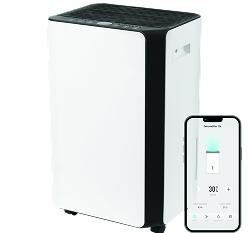
A dehumidifier is a simple yet effective appliance that removes excess moisture from the air to help maintain a healthy indoor environment. It draws in humid air, extracts the moisture (which collects as water in a tank or drains away), and releases drier air back into the room. By keeping humidity levels balanced, a dehumidifier helps prevent damp, mould, mildew, and allergens like dust mites, while also protecting furniture, fabrics, and personal belongings. Whether used in a single room or throughout the home, it can make living spaces feel fresher, more comfortable, and healthier.
Category
Sort by
Price
Showing all 4 results
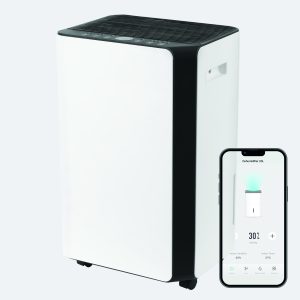
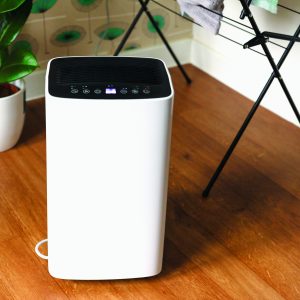

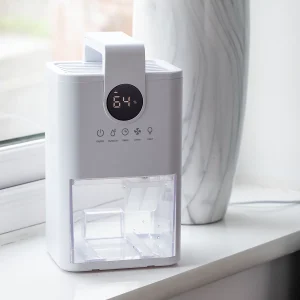
Let our experienced service team help you find the best solution and maximise the benefits of the cooperation.
These dehumidifiers cool air to condense and remove moisture, making them ideal for general home use in moderate to warm conditions.
Using a moisture-absorbing material instead of a compressor, these units work well in cooler environments and are popular for garages, boats, and conservatories.
Integrated systems that control humidity throughout the entire home, improving air quality and comfort on a larger scale, often used in conjunction with HVAC systems.
Compact and lightweight, these are perfect for small spaces like wardrobes, bathrooms, or single rooms where portability and convenience are key.
Heavy-duty units designed for large spaces or demanding environments such as warehouses, swimming pools, and construction sites, where fast, powerful moisture removal is required.
High humidity provides the perfect breeding ground for mould and mildew spores, which can quickly take hold on walls, ceilings, carpets, and furniture. These growths aren’t just unsightly — they can lead to structural damage and degrade indoor air quality. Mould spores can trigger allergic reactions, asthma attacks, and other respiratory issues. A dehumidifier regulates the moisture in the air, keeping humidity below the critical 50–60% range where mould typically thrives. This proactive approach helps protect both your property and your health.
Humidity has a direct impact on the quality of the air you breathe indoors. In overly humid environments, dust mites — another common allergen — flourish. These microscopic pests are a leading cause of allergies and asthma symptoms. Additionally, excess moisture can encourage the growth of bacteria and airborne mould spores. By maintaining optimal humidity levels, a dehumidifier helps reduce these triggers, resulting in cleaner, healthier air that is particularly beneficial for allergy sufferers, children, and the elderly.
Many household items are vulnerable to damage caused by moisture. Wooden furniture can warp or crack, musical instruments can lose their tone and precision, and fabrics can become musty and stained. Paper products such as books, photographs, and important documents are also susceptible to mould and deterioration. Electronics, too, can suffer from corrosion when exposed to prolonged dampness. Using a dehumidifier protects these valuable items from irreversible damage, helping to preserve their condition for years to come.
When humidity is high, the air feels warmer and more oppressive than it actually is — a phenomenon known as “humidity discomfort.” This can lead to restless nights, a sticky feeling on the skin, and general discomfort throughout the home. By removing excess moisture, a dehumidifier helps restore a sense of balance to your indoor environment, making it feel cooler, fresher, and more breathable. This can be especially welcome during humid summer months or in areas of the home prone to damp, such as basements or bathrooms.
Choosing the right dehumidifier is about more than just picking the first model you see — it’s about finding the one that best suits your space, lifestyle, and budget. Here are the key factors to consider before making your purchase:
Start by considering the size of the room or area you want to dehumidify. Larger spaces — such as open-plan living areas, basements, or multi-room flats — will require a more powerful unit with a higher extraction rate (the amount of moisture it can remove per day). Most manufacturers specify the recommended room size for each model, usually measured in square metres (m²) or cubic metres (m³). It’s worth measuring your space beforehand to ensure you choose an appropriately sized unit. Using an undersized dehumidifier in a large room may result in poor performance and unnecessary energy use.
Next, assess how damp the space is. If the room is very humid — for example, a bathroom with poor ventilation or a basement that suffers from persistent damp — you’ll likely need a high-capacity dehumidifier with stronger extraction power. On the other hand, for mildly damp areas such as bedrooms or kitchens with occasional condensation, a smaller or mid-range unit should work perfectly well. Understanding the severity of the moisture problem will help you avoid buying an overly powerful model for a light job, or an underpowered unit for a very damp space.
Modern dehumidifiers come with a variety of useful features — here are some worth considering:
Most dehumidifiers collect moisture in a water tank or reservoir. If left unattended, this stagnant water can quickly become a breeding ground for mould, mildew, and bacteria — which can lead to unpleasant odours and even release contaminants back into the air. To prevent this, make it a habit to empty the tank daily if the unit is running continuously, or whenever it reaches capacity. In addition, rinse the tank with warm soapy water at least once a week to keep it hygienic. Some users add a splash of white vinegar to the rinse for extra antibacterial cleaning (check your manufacturer’s recommendations first).
Many dehumidifiers include an air filter designed to capture dust, pet hair, and other airborne particles before they enter the unit. Over time, these filters can become clogged, which reduces airflow and forces the machine to work harder, increasing energy consumption and wear. Check the filter every couple of weeks, particularly if you run the dehumidifier in a dusty or high-traffic room. Washable filters should be rinsed and dried thoroughly before reinserting. For units with replaceable filters, follow the manufacturer’s suggested replacement schedule — typically every few months. Keeping the filter clean will also help improve indoor air quality.
Your dehumidifier needs good airflow to operate effectively. Dust, pet hair, and debris can accumulate around the vents and grilles, impeding circulation and reducing performance. Periodically vacuum around the unit and gently wipe the intake and outlet with a soft cloth. Ensure that the unit isn’t placed too close to walls, furniture, or curtains — most models require a certain amount of clearance (often 20–30 cm) around them to function properly.
While performing routine maintenance, take a moment to inspect the power cord, controls, and any drainage hoses for signs of wear, cracks, or damage. If you use a continuous drainage option, make sure the hose is clear and draining properly to avoid leaks or blockages.
If you only use your dehumidifier seasonally (for example, during damp winter months), give it a thorough clean before storing it. Empty and dry the tank completely, clean the filter, and wipe down the exterior. Store the unit in a dry location and cover it to prevent dust accumulation. When taking it out of storage, inspect it carefully before use to ensure everything is in good working order.

In a country like the UK, where damp and rainy weather is all
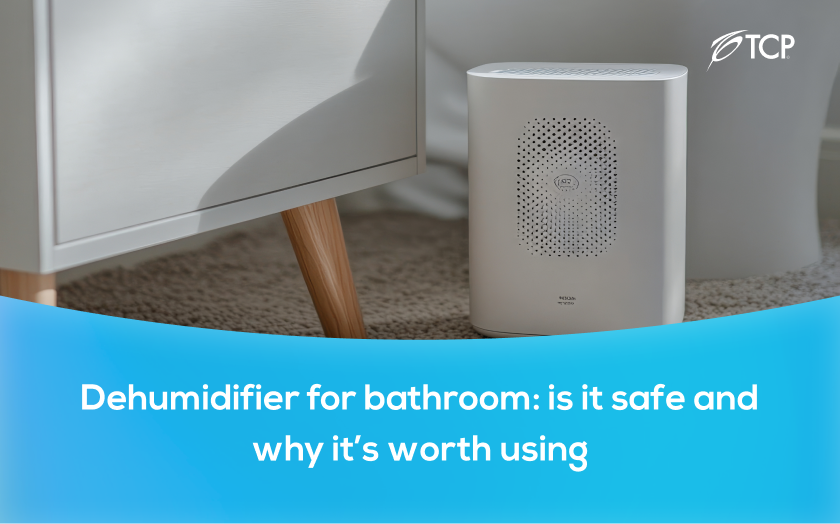
Bathrooms are naturally humid spaces, but excessive moisture can create a host of
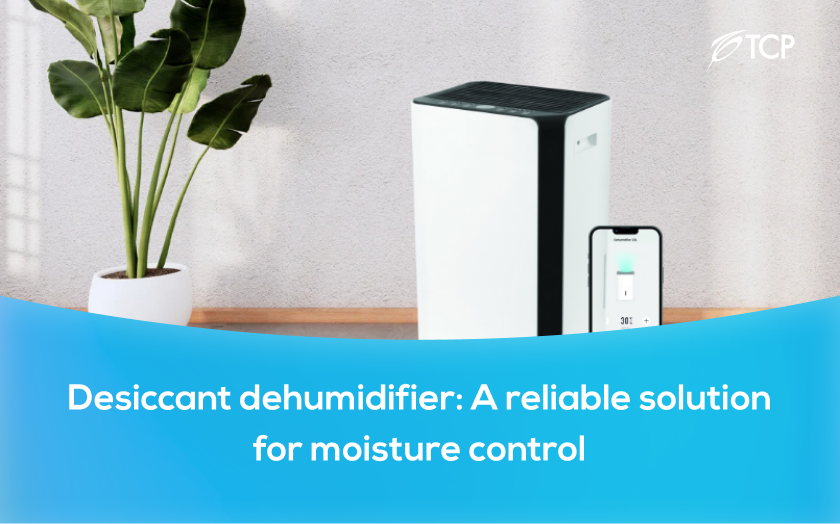
Moisture in the home can lead to a host of problems—from mould and
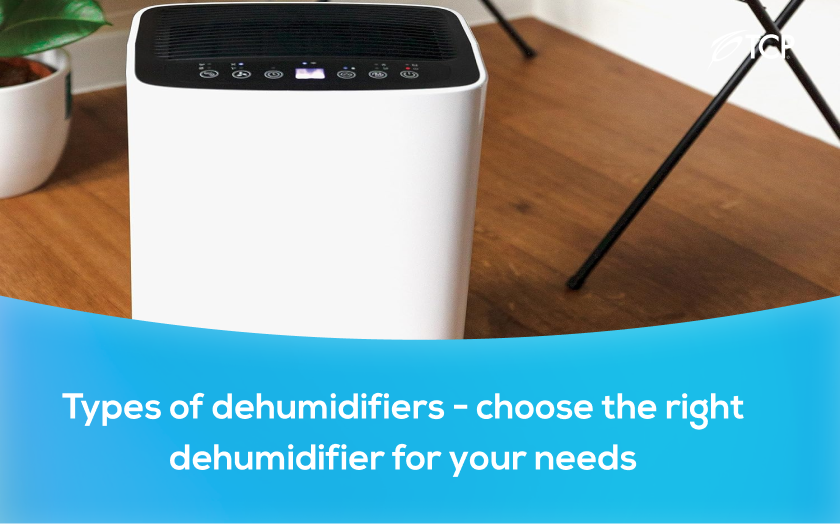
Too much humidity in your home can lead to mould, condensation, musty smells,

The right lighting can transform a garage from a dark, underused storage space into a bright, functional part of your

Lighting can transform the look and feel of a room — and few options do it with as much character
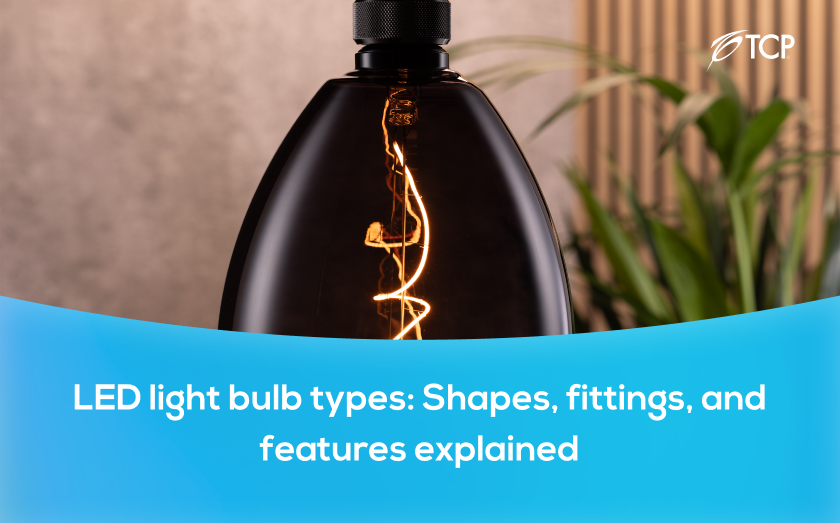
LED light bulbs have transformed the way we light our homes, offering long-lasting performance, low energy consumption, and a huge

All rights reserved 2025